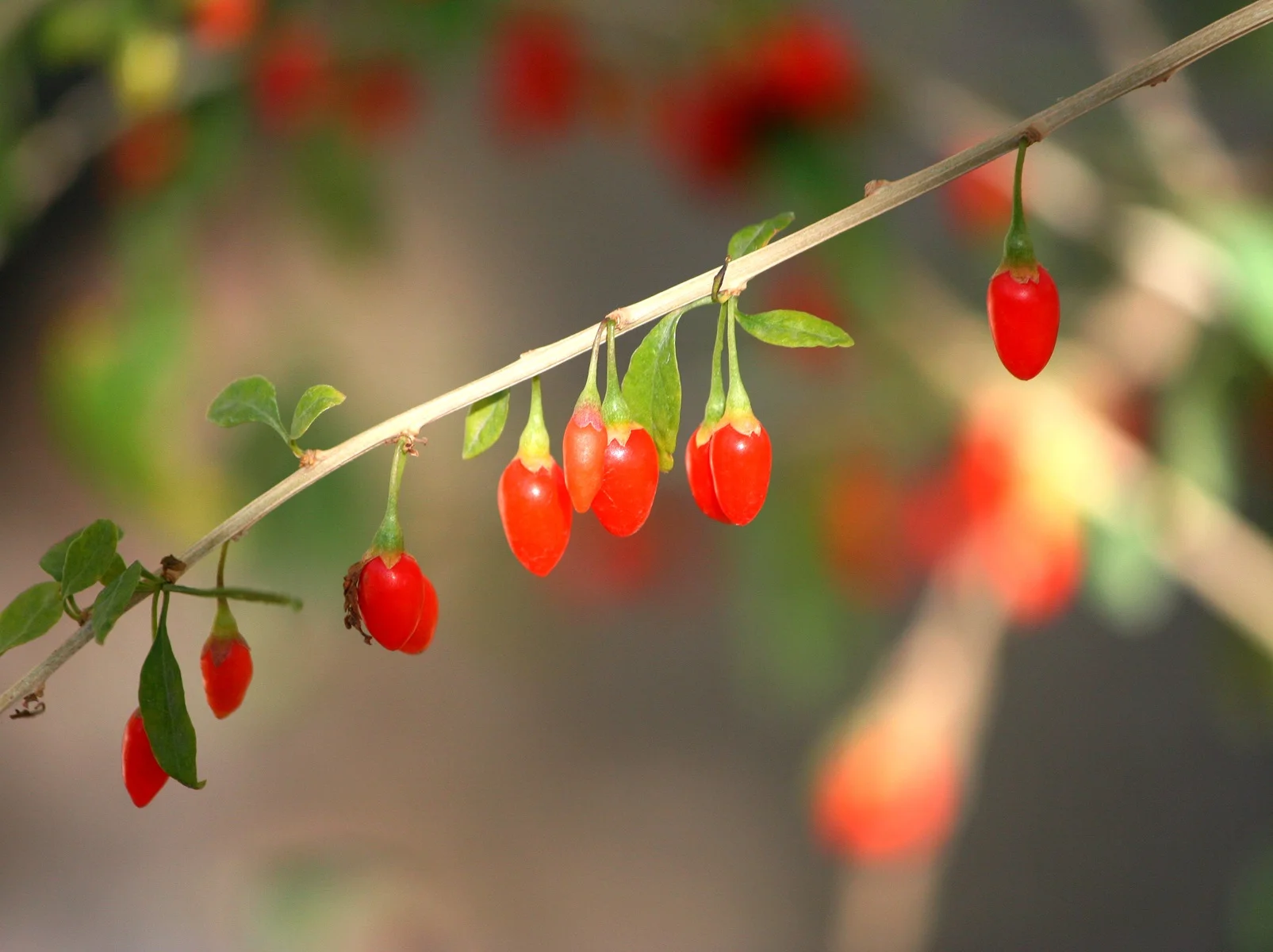Goji Fruit Powder
Goji berry, a sweet red fruit native to Tibet, has been used as a medicinal food for thousands of years and has been studied extensively in modern times to substantiate its health benefits. With over 15% protein, 21 essential minerals, 18 amino acids, and one of the highest amounts of beta carotene, the goji berry is a nutrient-dense superfood in a class all of its own.
The polysaccharides in goji contain lutein and zeaxanthin, which are beneficial for visual acuity. Goji berries are an abundant source of nutrients that can provide retina protection, and are thus particularly recommended for diabetic patients.
In addition to goji’s polysaccharides, the fruit contains a full complement of other nutrients:
18 amino acids, including the 8 essential ones
More antioxidant carotenoids than are found in any other known food, including more beta carotene than carrots, and zeaxanthin
Rich source of vitamin C
Nearly as much protein as bee pollen
21 trace minerals
Vitamins B1, B2, and B6, and vitamin E
Goji berry is one of the most nutritionally-rich foods in the entire world. Praised in Asia for thousands of years, goji berries are now being celebrated in the West for their superfood potential for longevity, vitality, and energy. Goji berries are rich in vitamins A & C and potassium and may contribute to immune, vision, and bone health*.
Our organic goji berries are grown and harvested on our farm in the Qinghai Basin on the Tibetan Plateau. While wild goji is rare, we discovered this basin as the perfect place to plant goji: pure with plenty of sunshine, clean air, water from Himalayan glaciers, and mineral-rich soil. The high-altitude environment fosters a slower-growing berry, although it is worth the wait because they are sweeter, cleaner, and 2-3 times more nutritious than any other goji berry around.
Specification
Protein ≥ 4%
Mono & Disaccharide ≥ 20%
Reference
Potterat, O., Goji (Lycium barbarum and L. chinense): Phytochemistry, pharmacology and safety in the perspective of traditional uses and recent popularity. Planta Med, 2010. 76(1): p. 7-19.
Harunobu Amagasea, N.R.F., A review of botanical characteristics, phytochemistry, clinical relevance in efficacy and safety of Lycium barbarum fruit (Goji). Food Research International, 2011. 44(7): p. 1702-1717.
Mi, X.S., et al., Protection of retinal ganglion cells and retinal vasculature by Lycium barbarum polysaccharides in a mouse model of acute ocular hypertension. PLoS One, 2012. 7(10): p. e45469.
Qian, D., et al., Systematic Review of Chemical Constituents in the Genus Lycium (Solanaceae). Molecules, 2017. 22(6).



